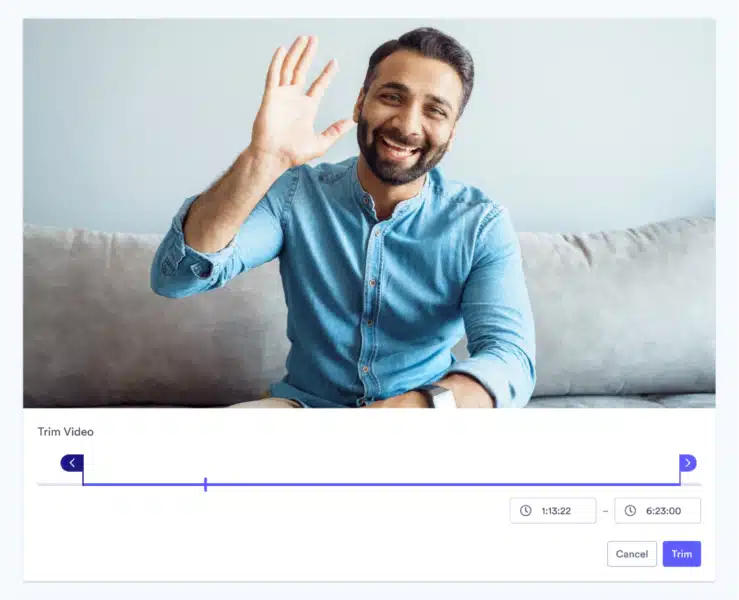Neuroscience: Video makes people happier than text
Study finds video messages can help break the overall negative mood of business inboxes.
The chances are good that you’ve opened an email that instead of text displayed a prompt to play a video message. It turns out there might be a scientific reason for that.
A new study on how people’s brains react to video-based sales email versus text-based email showed participants largely felt positive and happy when viewing video email. While text-based email tended to make people feel anxious (based on negative valence and arousal), video neutralized this effect and even promoted feelings of positivity in recipients.
But one finding stood out as a surprise — the business inbox tends to automatically invite a negative experience. When participants read through text-based emails provided in business inbox simulations, they started the process in an “unpleasant” state. Video-based email decreased participants’ negative experience. When participants were done watching the video and resumed viewing the remaining text-based emails, they returned to a neutral (not negative) state of mind.
“Video-based emails tend to taper off that negative response and provide recipients the opportunity for less fatigue. They also tended to motivate more people to action,” said Dr. Carmen Simon is a neuroscientist and the Chief Science Officer at Corporate Visions, a company that provides science-backed marketing and sales training programs to enterprise clients. B2B DecisionLabs, a division of Corporate Visions, recently partnered with Vidyard to conduct the study.

For this study, 39 study participants were outfitted with a range of neuroscience equipment that monitored them and collected data as they interacted with text and video-based email content.
Equipment included:
- An electroencephalogram (EEG) cap to record brain waves;
- An electrocardiogram (ECG) to record heart rate;
- Galvanic skin response (GSR) equipment measure skin conductivity; and
- Eye tracking tools for recording the gaze and where the eyes fixate.
“We like to use a combination of tools over just one or two because it gives us more information. Biometric tools are very good at telling us certain things,” she explained. “For example, that you’re looking at a specific word or an image, for how long, and whether you return to it. But if you’re fixating on one thing versus something else it can mean interest, but it can also mean confusion, which is why we need some other signals to explain whether something attracted your attention. For example, if the EEG shows a heavier cognitive workload it implies confusion rather than interest.”
All of those tools enabled Dr. Simon to keep the sample size relatively small.
“In this case, we had two conditions. One was directed towards video-based emails and the other was text-based emails. We used the same subject to do both, which means that we doubled the minimum of participants. We’re very satisfied with that.”
Dr. Simon’s team monitored the following variables:
- Attention;
- Valence (how much the brain enjoyed the experience);
- Arousal (how alert and awake the brain was as it engaged in an experience);
- Fatigue;
- Working memory (cognitive workload); and
- Motivation to act (to keep doing what you’re doing or to keep engaging in in a circumstance).
Dig deeper: You smiled, so we think you’ll like this product
When using video, focus on intent
Based on the data she gathered in the study, Dr. Simon recommends that marketers focus on a video’s intent from the audience’s point of view, meaning you’re showing them how to solve a problem, how something is being clarified, or that there’s a contrasting solution that demonstrates some differences between two things.
The major benefit of using or creating a video with intent (versus results) is that video production itself becomes easier.
“It’s important to not confuse intent with results,” said Dr. Simon. “Getting people to answer the email, enroll in a webinar, or book a meeting is about results, not intent. Intent is about helping someone solve a problem or clarifying an issue.”
Other key findings from the study included:
- Readers concentrate mainly on the beginnings of paragraphs, regardless of how long the paragraphs are.
- Short sentences and short paragraphs hold people’s attention longer than long sentences/paragraphs.
- Specific and concrete language enabled participants’ brains to better visualize complex details even in text-based emails.
- Video email was easier to process for participants and generated more precise memories.
- Including a reward/incentive/action in the title of the video and repeating it in the email subject helped participants recall specific phrases and details in the video.
- Dynamic elements in video enhance the overall experience (e.g., show, rather than tell by using props, diagrams, illustrations, and movement to guide the viewer and tell a story).

“The reason why video emails often perform better than text is because our visual system is, by default, drawn to dynamic scenes,” said Dr. Simon. “We rarely process something that is static in our real lives. We typically process a series of dynamic scenes because our visual system is designed for that. Make the video highly concrete and specific versus keeping something generic and abstract. The brain is a highly visual organ, so the more visual things are, the better the attention and ultimately recall we have for those things.”
Contributing authors are invited to create content for MarTech and are chosen for their expertise and contribution to the search community. Our contributors work under the oversight of the editorial staff and contributions are checked for quality and relevance to our readers. MarTech is owned by Semrush. Contributor was not asked to make any direct or indirect mentions of Semrush. The opinions they express are their own.
Related stories